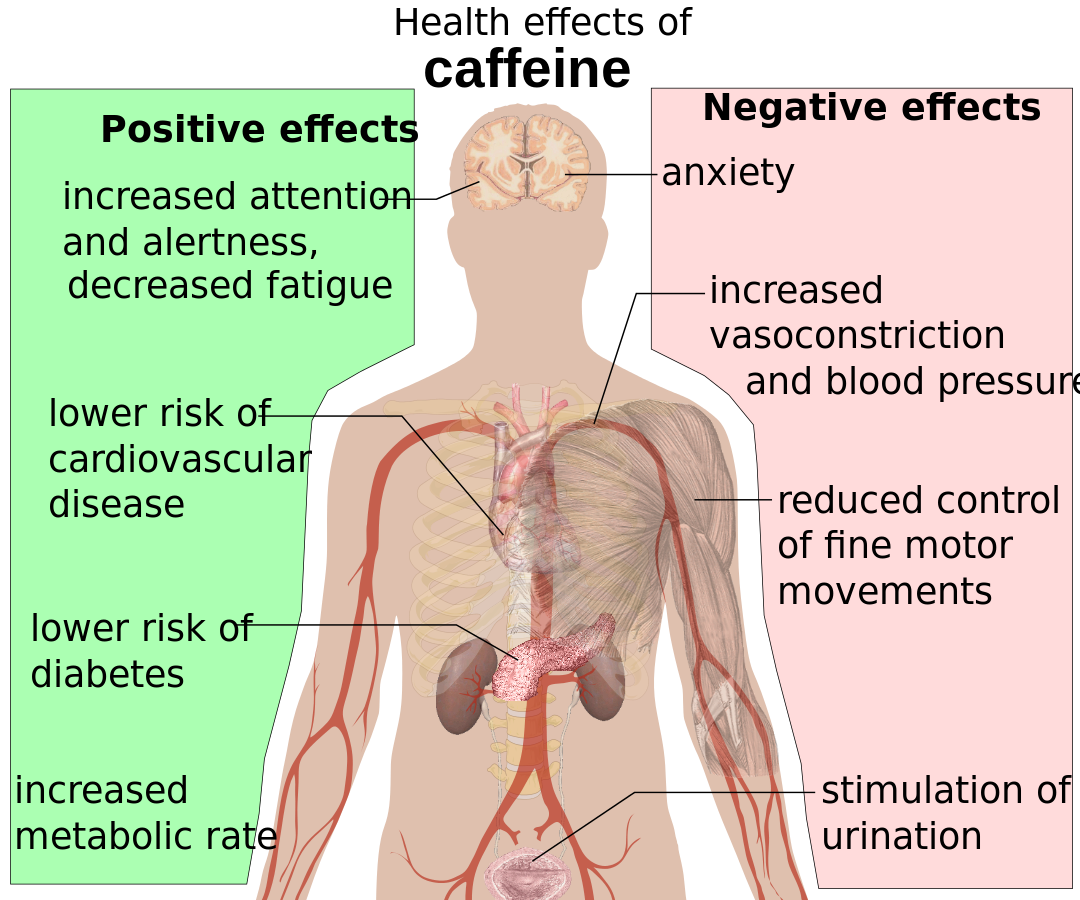

You will learn about How much & how many.




Imagen: Side effects of caffeine. Creative Commons.https://en.wikipedia.org/wiki/Caffeine#/media/File:Health_effects_of_caffeine.svg
Instructions: Complete the following survey. Then click on Compare

Instructions: Read the text and choose True or False.
Ann Chapman, dietitian for Student Health Services, says caffeine consumption increases students’ alertness. Chapman says people react to caffeine differently depending on factors such as body size. Though some people feel the effects after one serving, some people can consume several servings without achieving the same caffeine effects. Students can obtain caffeine in many ways, shapes, and forms. Chapman says caffeine is in products such as tea, coffee, cola drinks and chocolate.
For most people, Chapman says, moderate consumption of caffeine is about 300 milligrams of the substance, the equivalent of three cups of coffee. She says side effects of too much caffeine included insomnia, restlessness, muscle-twitching and increased heart rate. She says the effects are not dangerous to people’s health, but they can sometimes be uncomfortable.
Instructions: Choose True or False according to the text.

Look at the following information about Nouns:
We use How many or How much when we want to know the quantity or amount of something.
Look at the word order:
| How much | uncountable noun | is there? |
|---|---|---|
| How much | sugar | is there? |
| How much | money | is there? |
| How much | water | is there? |
| How many | countable noun | Are there? |
|---|---|---|
| How many | books | are there? |
| How many | students | are there? |
| How many | boys and girls | are there? |

Instructions: Write How much or How many.

Instructions: Make logical questions with the following words:

Instructions: Choose the right options in the following dialogues.